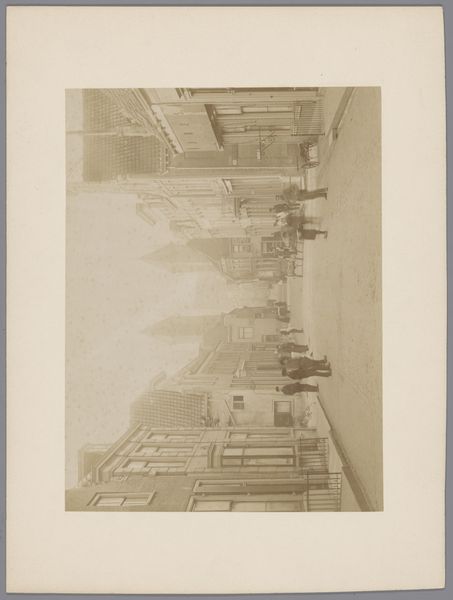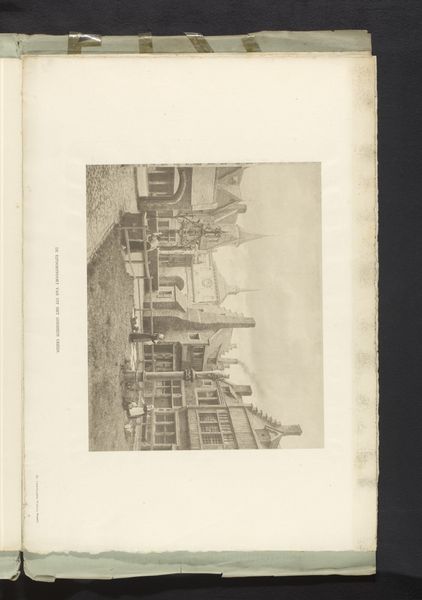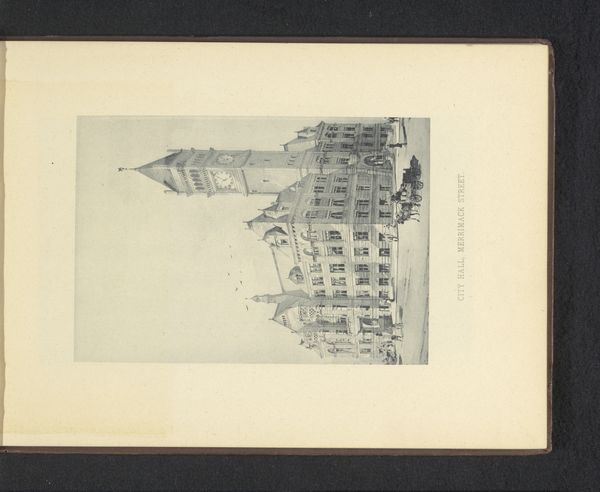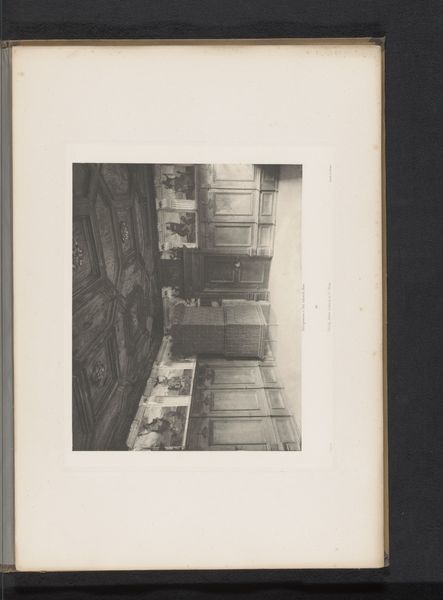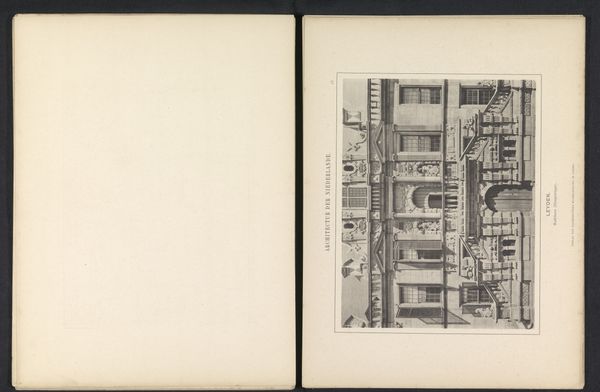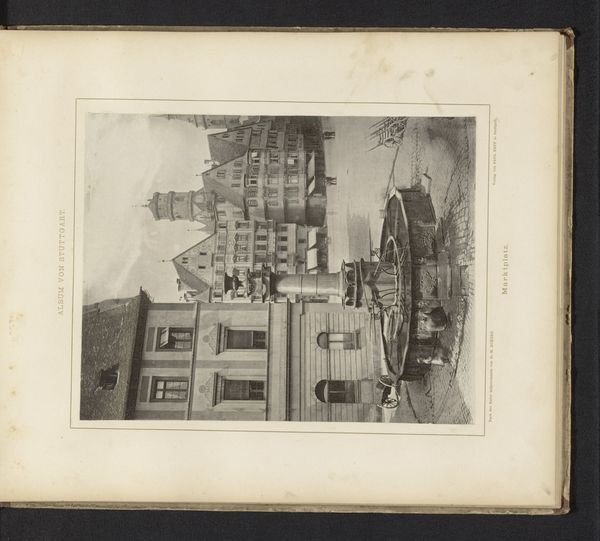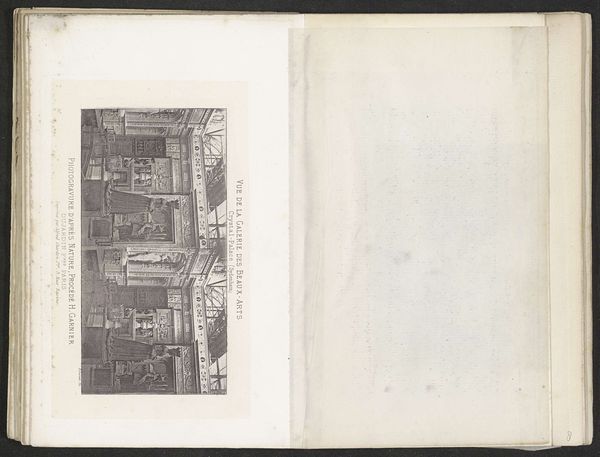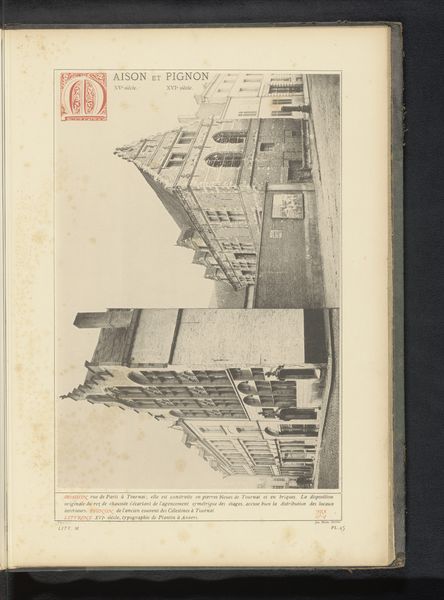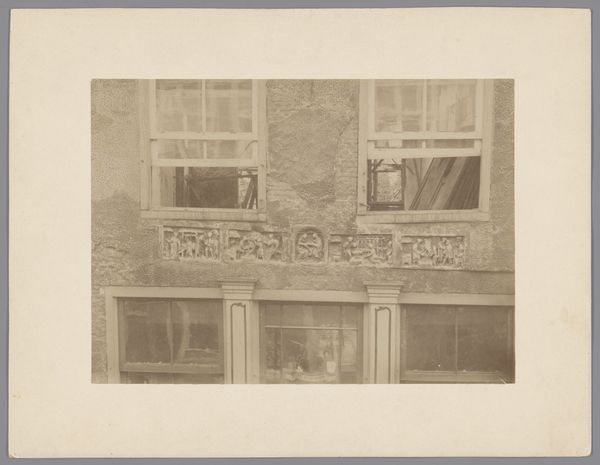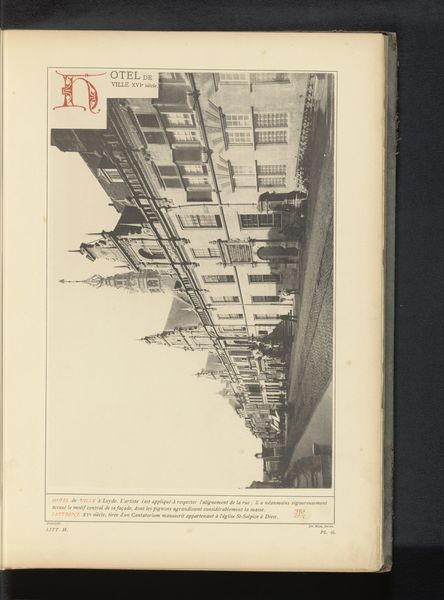
Dimensions: height 174 mm, width 229 mm
Copyright: Rijks Museum: Open Domain
Editor: Here we have an anonymous photograph, taken around 1900, showing "Straatgezicht te Amersfoort met de Kamperbinnenpoort" -- a street scene in Amersfoort with the Kamperbinnenpoort. The sepia tones lend the image a quiet, almost ghostly feel. What stories do you think this picture might be trying to tell? Curator: I see a powerful narrative about urban development and the preservation of historical spaces. Notice how the photograph, likely commissioned by the Dutch Office for Monuments, frames the architecture not just as aesthetic objects, but as markers of cultural identity. In 1900, many European cities were rapidly modernizing. What tensions might exist between progress and the desire to hold onto a tangible past? Editor: So it's not just a pretty picture of an old street, it's a political statement about urban change? Curator: Precisely. The very act of documenting this scene suggests a concern about its potential disappearance or alteration. It implicitly raises questions about who gets to decide what constitutes “progress” and who benefits, and what cultural values should be preserved in the face of modernization. How does that perspective shift your initial read of "ghostly"? Editor: Well, if this photo is arguing for preservation, maybe that ghostliness is about what might disappear. It adds urgency to seeing a place that they're trying to save. It is interesting how a simple photograph can carry so much cultural weight! Curator: Exactly. These kinds of archival images are key in understanding shifts in power dynamics and preservation discourse. It's about recognizing who had the power to represent and, by extension, shape the narrative. I appreciate your keen insights!
Comments
No comments
Be the first to comment and join the conversation on the ultimate creative platform.
